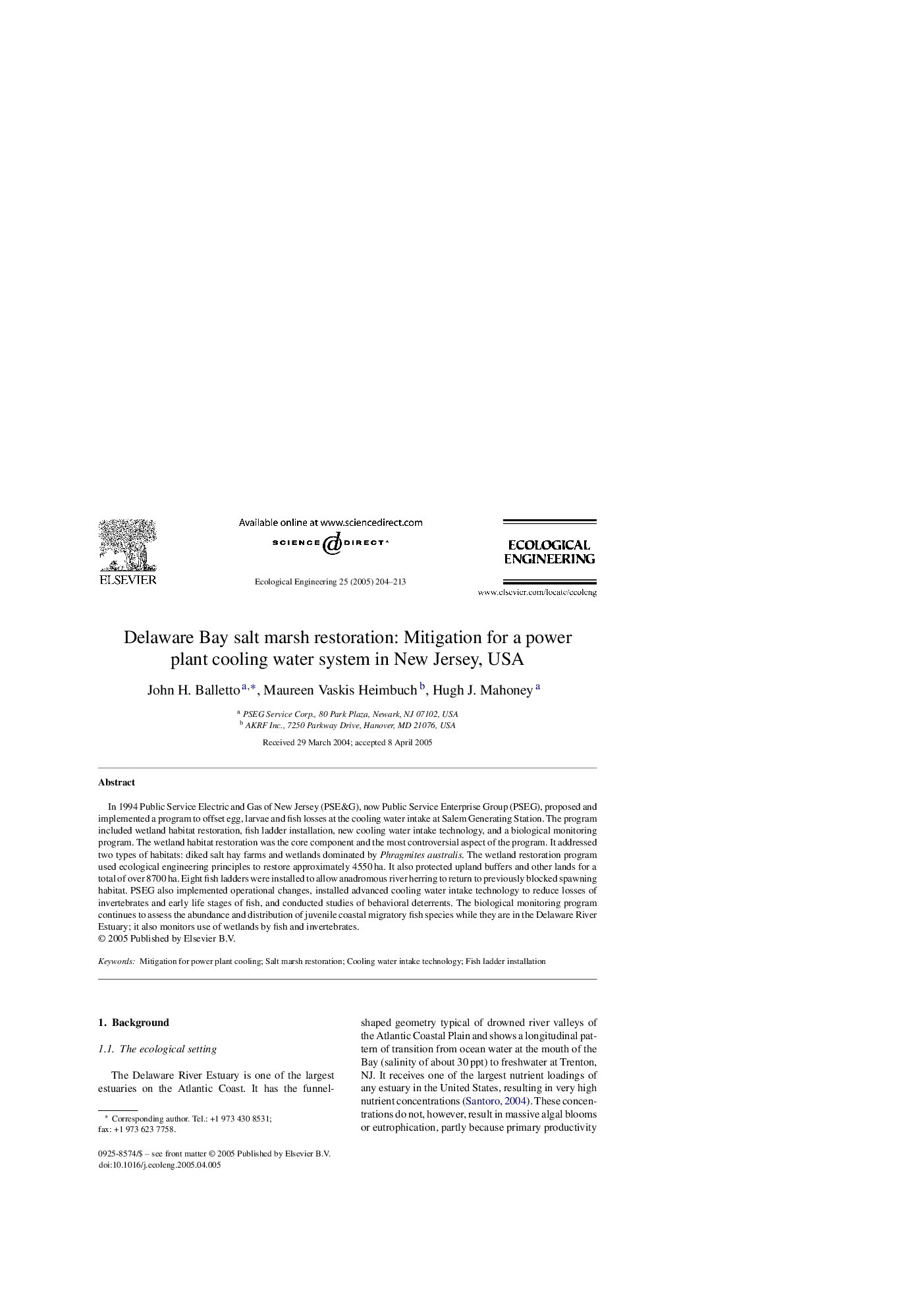| Article ID | Journal | Published Year | Pages | File Type |
|---|---|---|---|---|
| 9447486 | Ecological Engineering | 2005 | 10 Pages |
Abstract
In 1994 Public Service Electric and Gas of New Jersey (PSE&G), now Public Service Enterprise Group (PSEG), proposed and implemented a program to offset egg, larvae and fish losses at the cooling water intake at Salem Generating Station. The program included wetland habitat restoration, fish ladder installation, new cooling water intake technology, and a biological monitoring program. The wetland habitat restoration was the core component and the most controversial aspect of the program. It addressed two types of habitats: diked salt hay farms and wetlands dominated by Phragmites australis. The wetland restoration program used ecological engineering principles to restore approximately 4550Â ha. It also protected upland buffers and other lands for a total of over 8700Â ha. Eight fish ladders were installed to allow anadromous river herring to return to previously blocked spawning habitat. PSEG also implemented operational changes, installed advanced cooling water intake technology to reduce losses of invertebrates and early life stages of fish, and conducted studies of behavioral deterrents. The biological monitoring program continues to assess the abundance and distribution of juvenile coastal migratory fish species while they are in the Delaware River Estuary; it also monitors use of wetlands by fish and invertebrates.
Keywords
Related Topics
Life Sciences
Agricultural and Biological Sciences
Ecology, Evolution, Behavior and Systematics
Authors
John H. Balletto, Maureen Vaskis Heimbuch, Hugh J. Mahoney,
